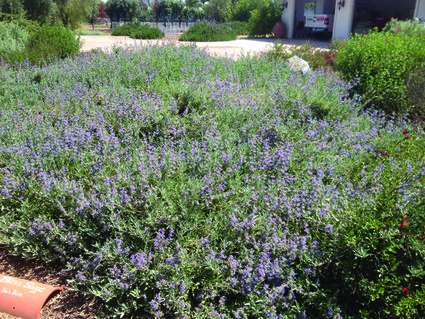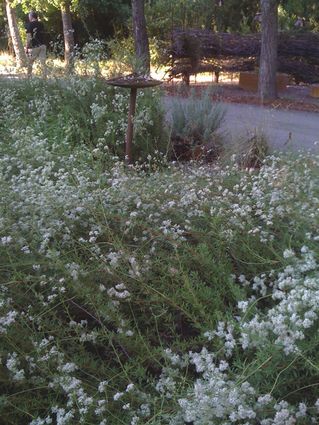Water-Saving Landscapes
Last updated 3/18/2015 at 9:29pm | View PDF
Water-saving landscapes continue as the big trend in gardens, and with good reason. In working with clients over the past several years, here are a few things my company has learned about re-creating a garden that is more water-wise:
Reduce the lawn. Outdoor water use can be 60% of household water use, and most of that goes to summer watering cool-season lawns like fescue. Consider alternatives. Fast-growing, California-native ground covers include dwarf coyote bush, bees' bliss sage and dwarf California buckwheat. These provide habitat value to often-overlooked native pollinators. Non-native ground covers include 'Huntington Carpet' rosemary and sundrops. Avoid myoporum and vinca.
Improve irrigation efficiency. Add irrigation upgrade onto the to-do list and enjoy years of reducing water costs and well-depletion. In the meantime, or even after you have improved your system, inspect it at least seasonally. Even fixing a few leaks, over-sprays and run-off problems saves huge amounts of water. And don't forget to adjust your controllers seasonally or instruct your gardener. Consider hiring a sprinkler-repair professional if irrigation isn't in your gardener's skill set.
Cover the bare dirt. A little bare dirt provides habitat for ground-nesting native bees, but you don't have to overdo it. Leaves, twigs, old flowers and ground-up bark all make good mulch materials for a naturalistic garden. Use bagged or uniform mulch for a more formal look. Pea-gravel and other rock or gravel can also be used.
Consider open space. We like to crowd our gardens, but this isn't always desirable or necessary. Use fewer plants; have more open space between them, or create islands with open space in between. Island gardens are kid and dog-friendly, since there is open space for safe, snake-free-zone play and exploration. Use mulch, hardscape, a little bare dirt, boulders and some plants to create a garden that shows off the plants better than if they were all competing for sun and resources.
Learn about summer dormancy. Almost all Mediterranean-climate plants, which thrive in our area, like to take a break during the hottest part of the year. We are so used to winter dormancy, we no longer think those rows of peach, walnut or oak trees to be dead in January. Summer dormancy has a look too, and once you know it, you are no longer put-off by that slumbering sage or that lounging lavender. Use heat-loving low-water plants from the southwest to perk up the garden in summer and let the others rest awhile after a moderate pruning.
Peyton Ellas is the owner of Quercus Landscape Design, specializing in California native plant-based gardens. For questions, upcoming events and monthly newsletter, visit the website: quercuslandscapedesign.com.





Reader Comments(0)